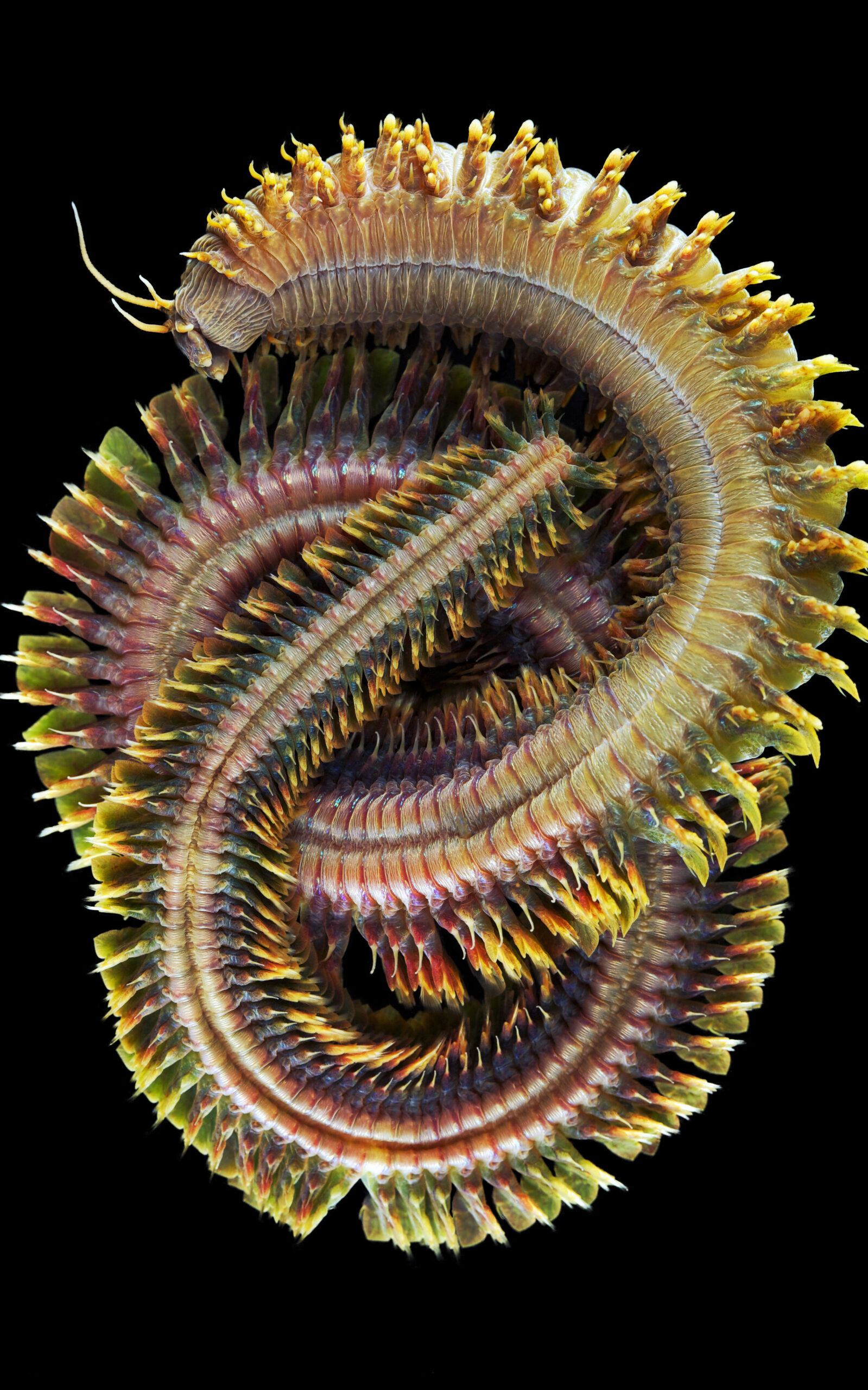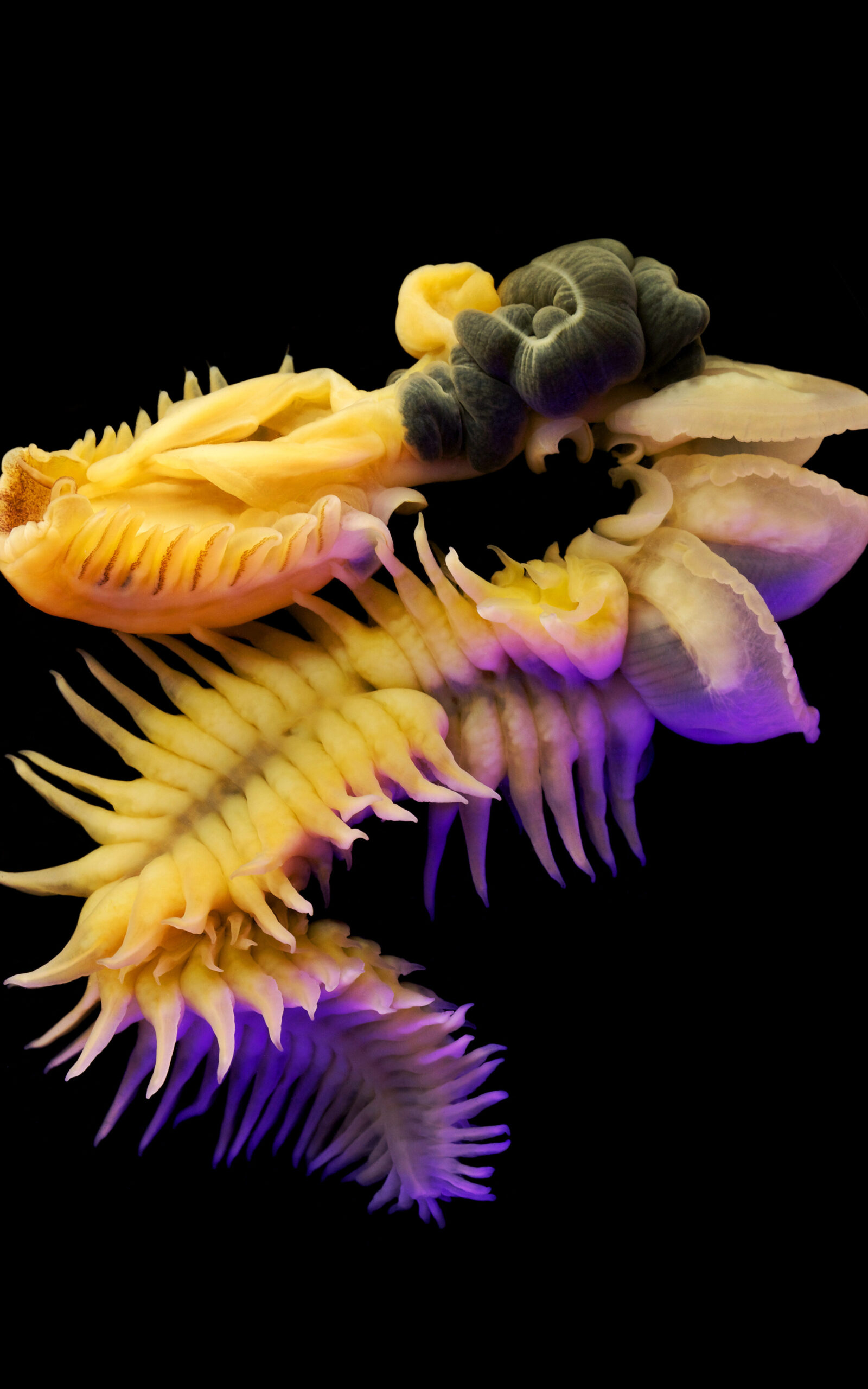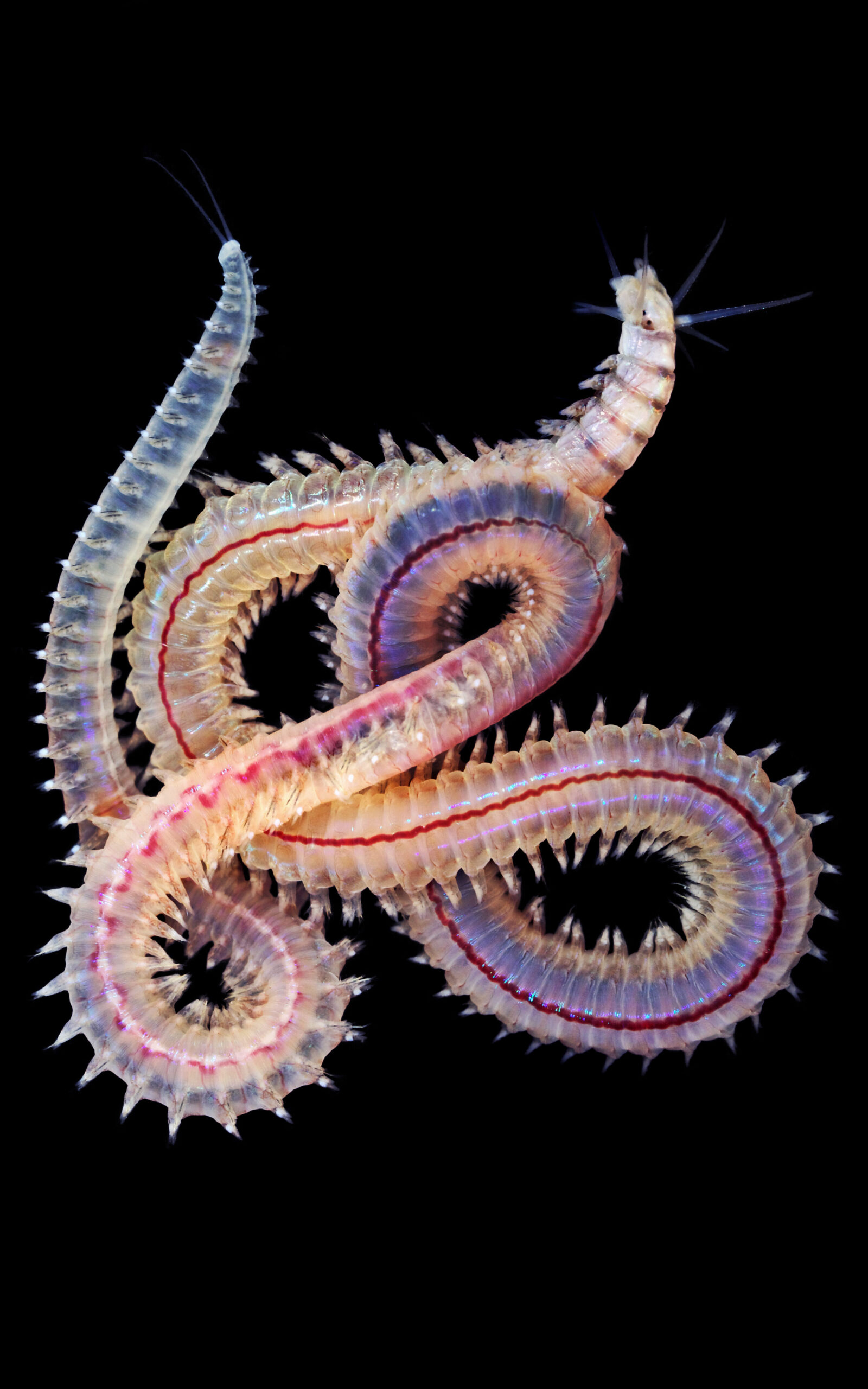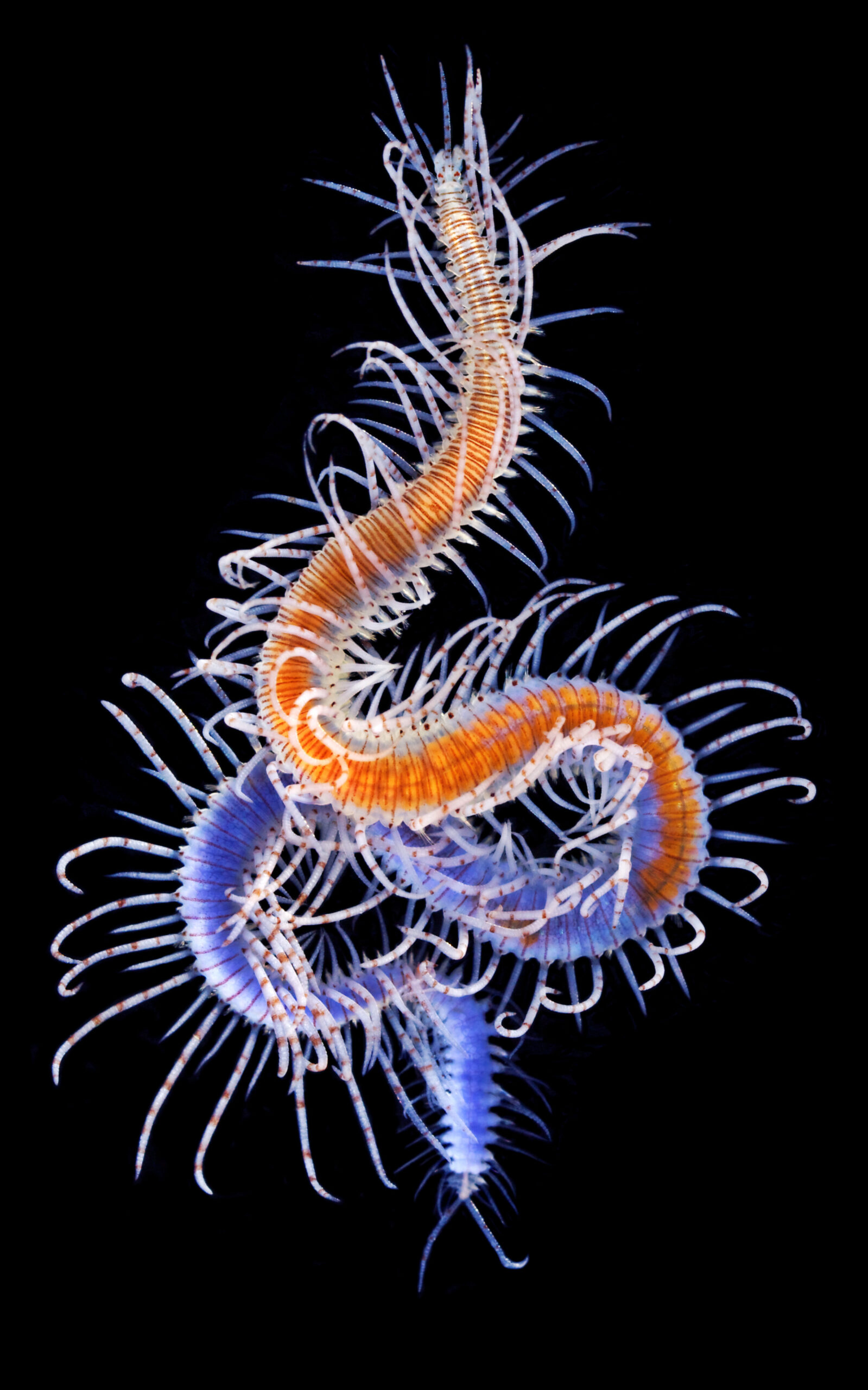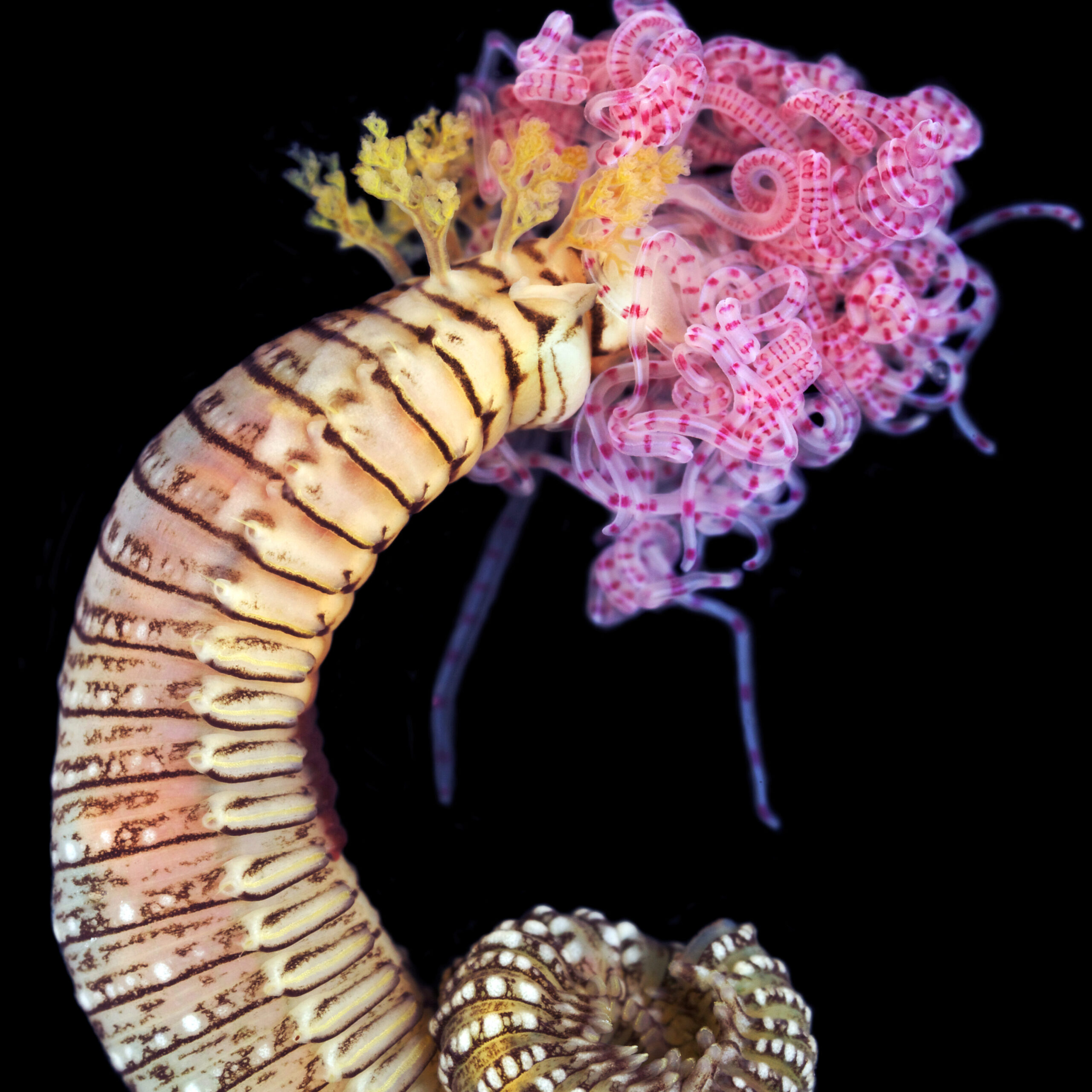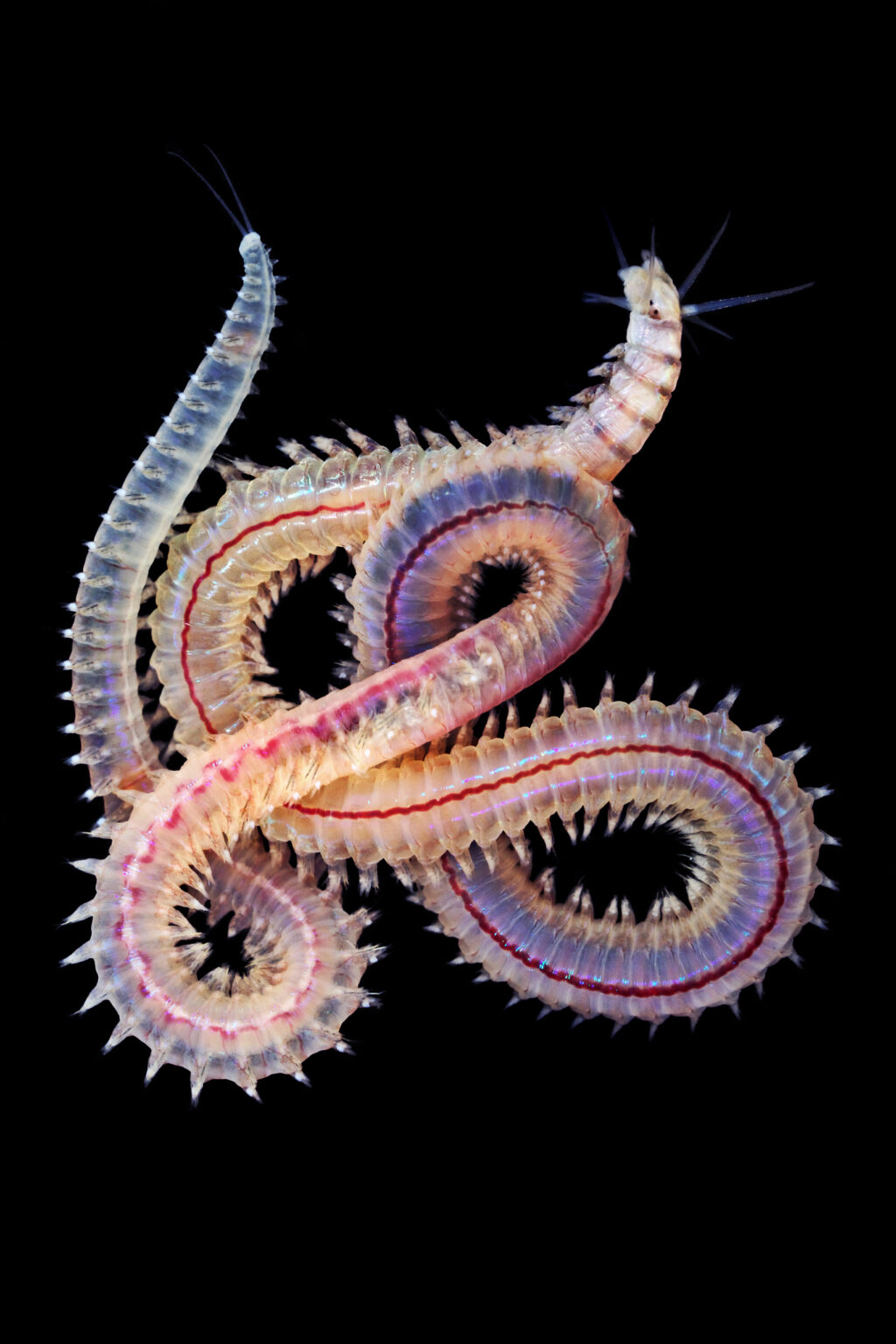Words by Mandi Pimental
Russian marine biologist Alexander Semenov is a unique photographic artist specializing in invertebrate animals. Currently, he works as the Head of the Divers’ team at Moscow State University’s White Sea Biological Station where he organizes various aspects of underwater work. Semenov and his team often dive in unfavorable and harsh conditions, successfully conducting complex research projects. With a key specialty in scientific macrophotography in natural environments, his practice makes it possible to observe animals that cannot be properly studied under laboratory conditions, such as soft bodied planktonic organisms or stationary life forms living on the sea floor. His personal goal is to study underwater life through camera lenses and to boost people’s interest in marine biology. This is done by sharing his findings through social media and in real life through public lectures, exhibitions and media events.
Alexander Semenov isn’t just a scientist or photographer. His aim is to capture the rarest moments of ocean life with the most modern photographic and video equipment. Explorers of the past couldn’t dream about the possibilities now available in 2016, and as a result, Semenov puts forth colorful, unique and scientifically valuable images fit for a museum.
When one thinks of worms, they envision the common earthworm or squirming bundles found outdoors. In nature, namely in the depths of the ocean, there is an incredible diversity of worms quite beautiful in their own way. Semenov’s latest series focused on polychaetes, or bristle worms. A plentiful class of annelid worms that accounts for more than 13,000 species with very different anatomies. They are primarily sea dwellers that are widely distributed throughout the World Ocean and can be found at all depths, from the intertidal zone to the dark depths several kilometers down.
This group has a very different mode of feeding, moving and living, so it encompasses a huge number of worms that are quite different from each other. When looking through his photos, you will see that some resemble Chinese sea dragons, while others look like exotic flowers. There are some that settle only inside the skeletons of dead whales, while others live in burrows and use their huge jaws to catch small fish.
A portion of the collections captures were taken at the Lizard Island Research Station near the Great Barrier Reef in Australia during a 2-week field course on the species. In a span of ten days Semenov photographed 222 different worm species, with over 90 species having been completely unknown to science up until that time. The remainder of the series was shot during Semenov’s normal course of work at the White Sea Biological Station in northern Russia.
Today we know 236, 000 discovered and described marine species. Scientists estimate that it’s just 8-10% of the World Ocean biodiversity, so a few million species are still unknown. This means that explorers like Alexander Semenov have a lifetime of work ahead of them.
For more information on Semenov and strange and unique marine creatures, be sure to check his book – “The Magical World of the Cold Seas”.
